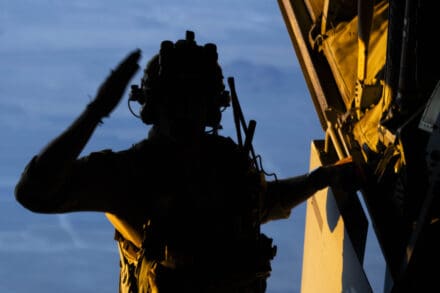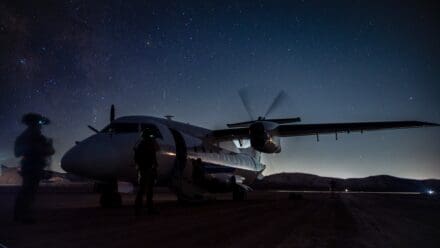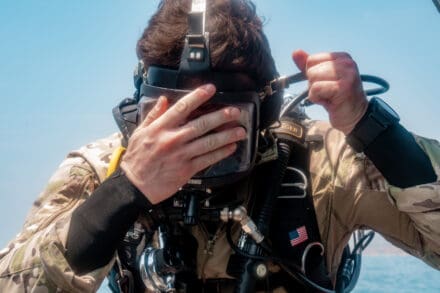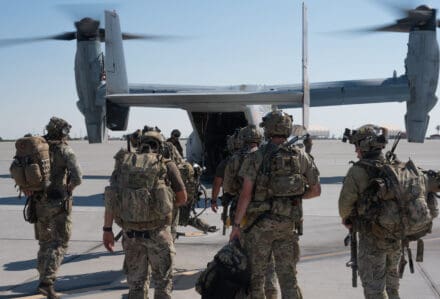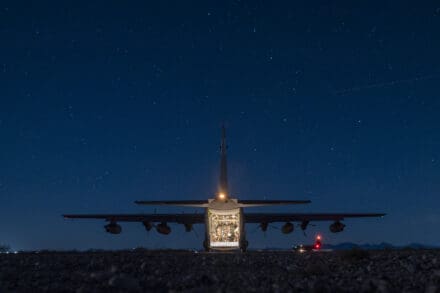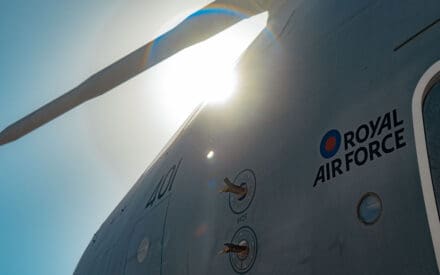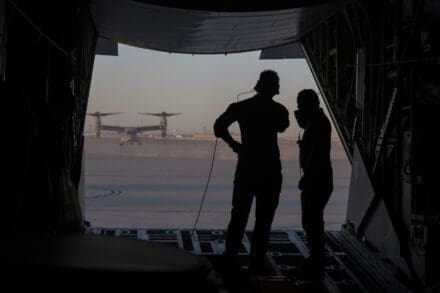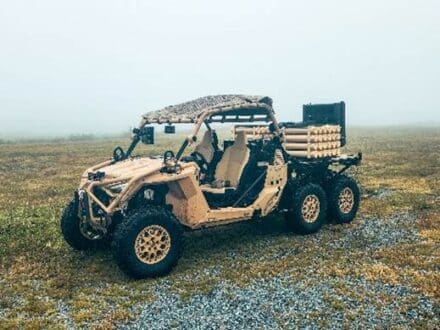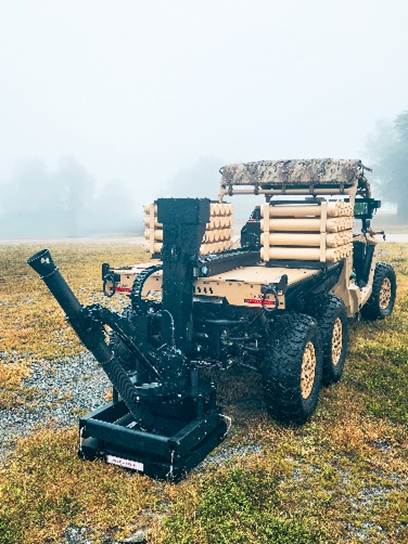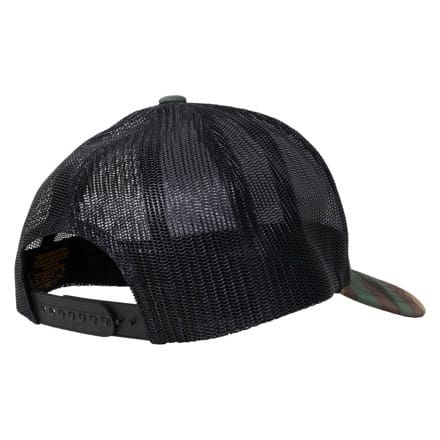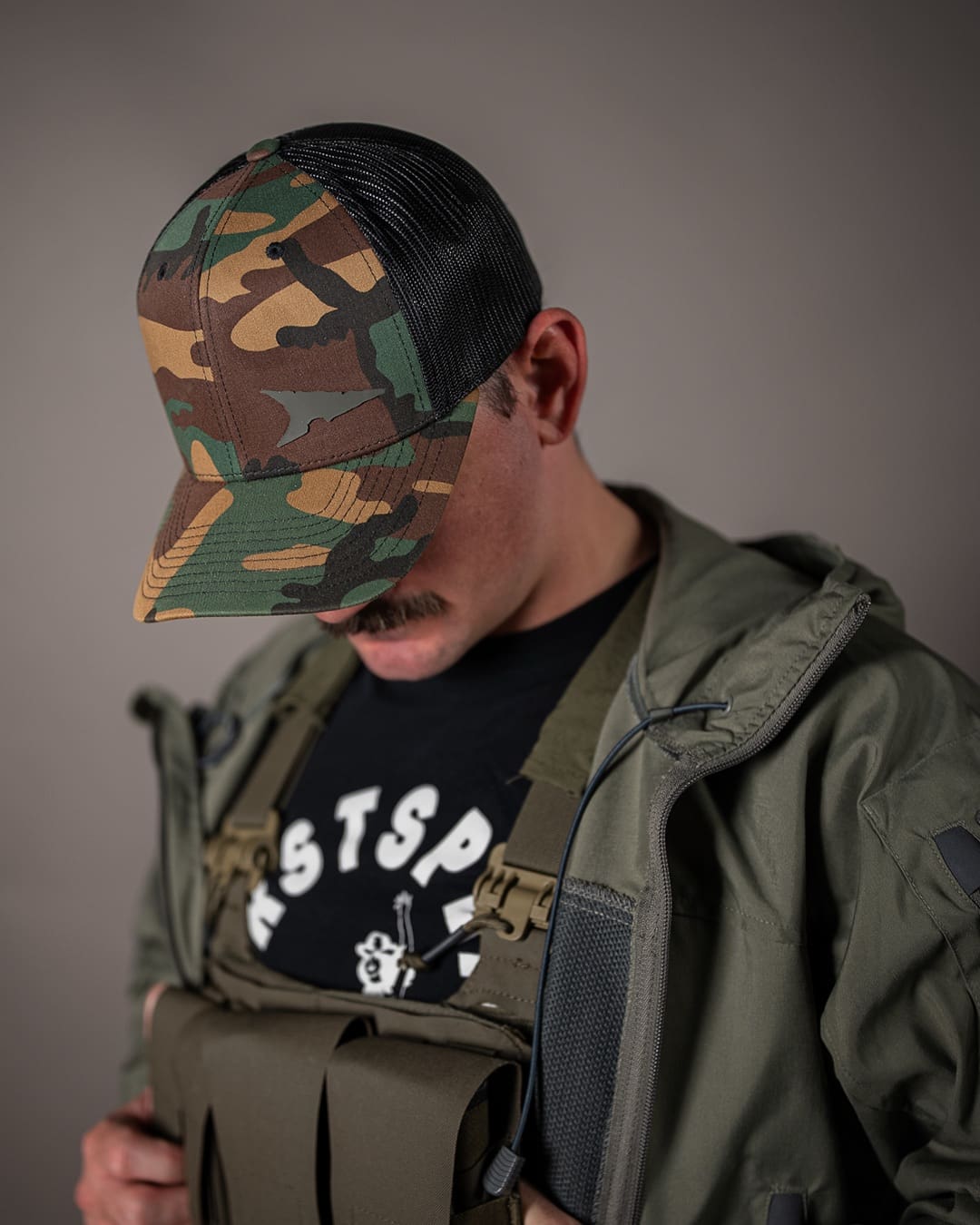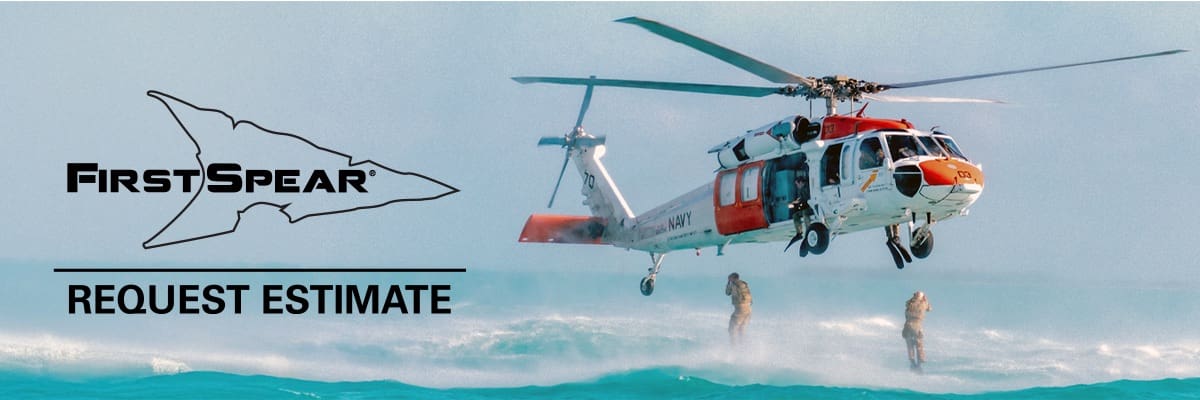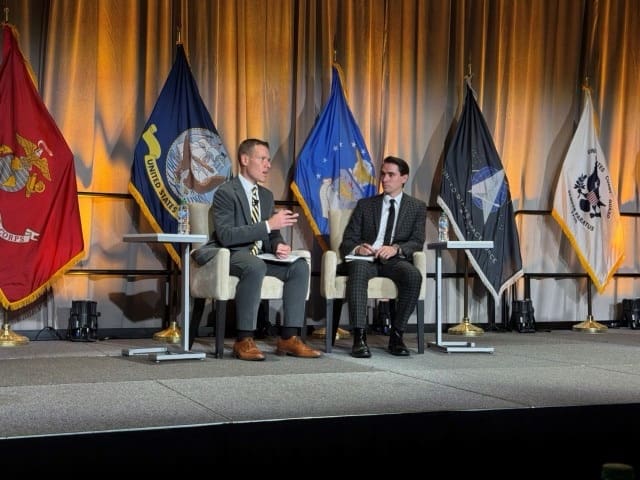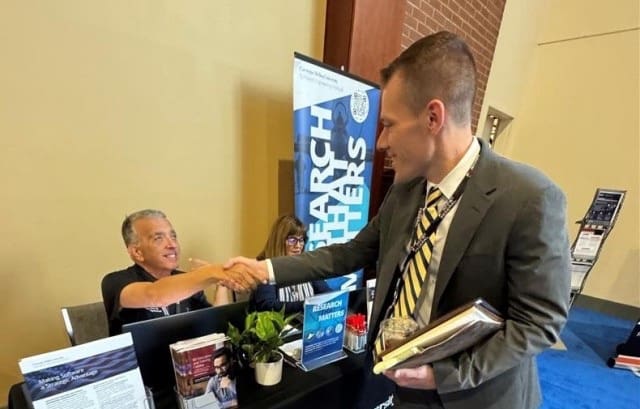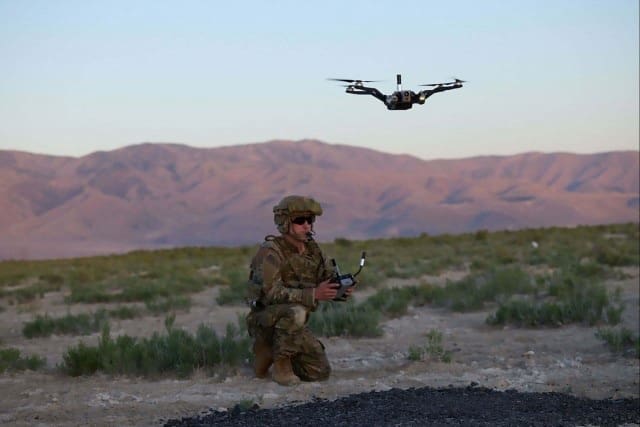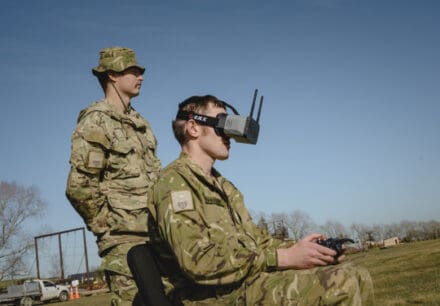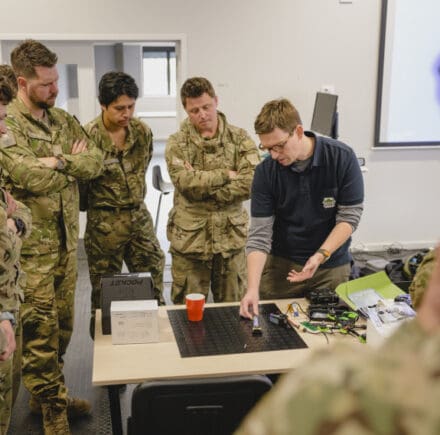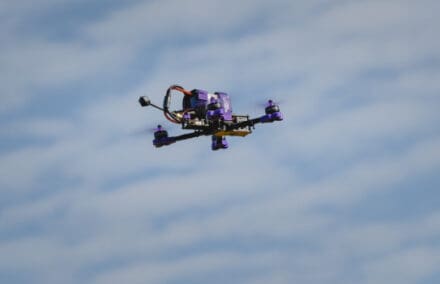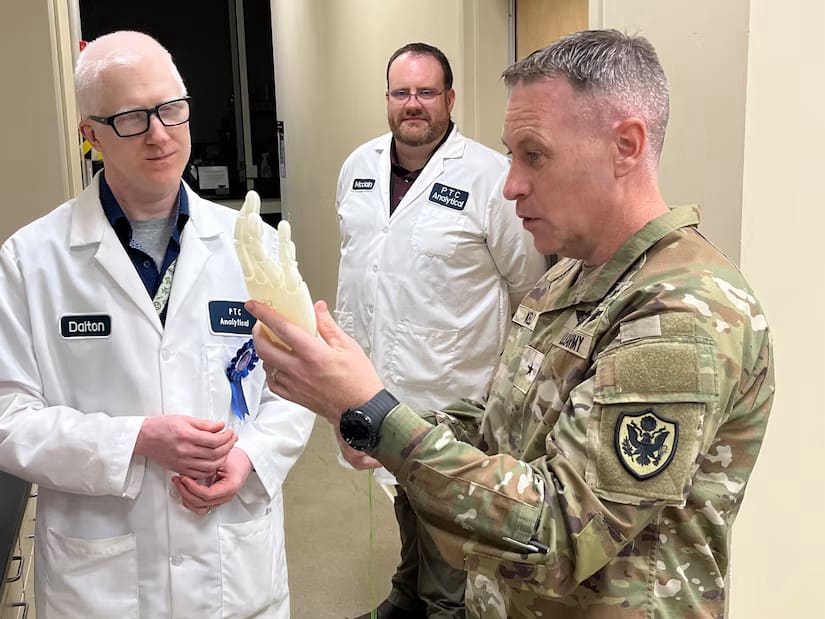For Army 1st Lt. Francesco La Torre, the Army’s first drone-on-drone strike wasn’t exactly a Hollywood moment.
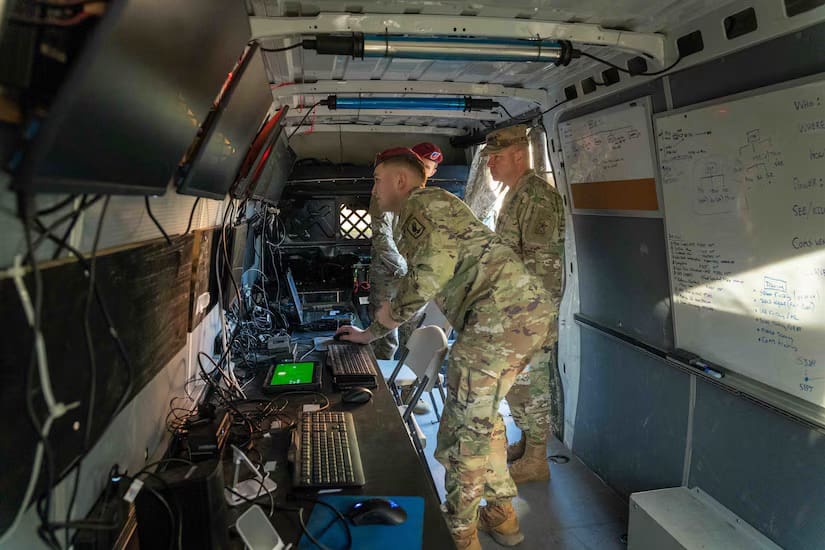
“In [the Star Wars movie], ‘A New Hope,’ Luke Skywalker flies an X-Wing through the Death Star trench and blows it up,” La Torre said. “This wasn’t like that. It was way harder. Honestly, it felt more like Darth Vader shooting down rebel pilots. He might be the villain, but he’s also one of the best pilots in the galaxy.”
That was the image in La Torre’s mind as his team with the 173rd Airborne Brigade achieved a milestone once unimaginable for conventional Army units: destroying an aircraft in flight using a first-person-view drone carrying an explosive charge.
The strike took place earlier this month during the Army’s Unmanned Aerial Systems and Launched Effects Summit, held Aug. 11-15 at Fort Rucker, Alabama. The live-fire event was led by the brigade’s bayonet innovation team in partnership with the Pennsylvania Army National Guard and engineers from Army Combat Capabilities Development Command.
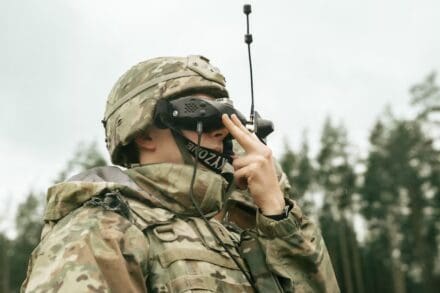
“When I heard [Army] Chief [Warrant Officer 2] Nate Shea say, ‘Arming,’ when he was lined up behind the fixed wing threat UAS, I knew he’d take it down,” La Torre said. “A few seconds later he detonated the claymore [mine], and I looked up from my end-user device to see the fixed-wing [aircraft] drop out of the sky.”
The success came after weeks of training. Paratroopers flew for hours each day, building muscle memory while rehearsing how to engage a fast-moving aircraft. Army Chief Warrant Officer 2 Andrew Topits familiarized himself with the fixed-wing platform a month in advance, while Shea practiced with inactive claymores. Once on the ground at Fort Rucker, the operators flew daily in changing weather, preparing for a target that could appear anywhere across the range.
Technical skill proved as important as piloting.
“The ability to train and solve problems immediately afterwards was critical to mission success,” La Torre said. “The team was soldering, disassembling, reassembling and performing [quality assurance] around the clock while rehearsals were underway. While tactical units and technicians may not share the same language, they do share an intellectual curiosity and desire to succeed.”
La Torre emphasized what it means for the average paratrooper.
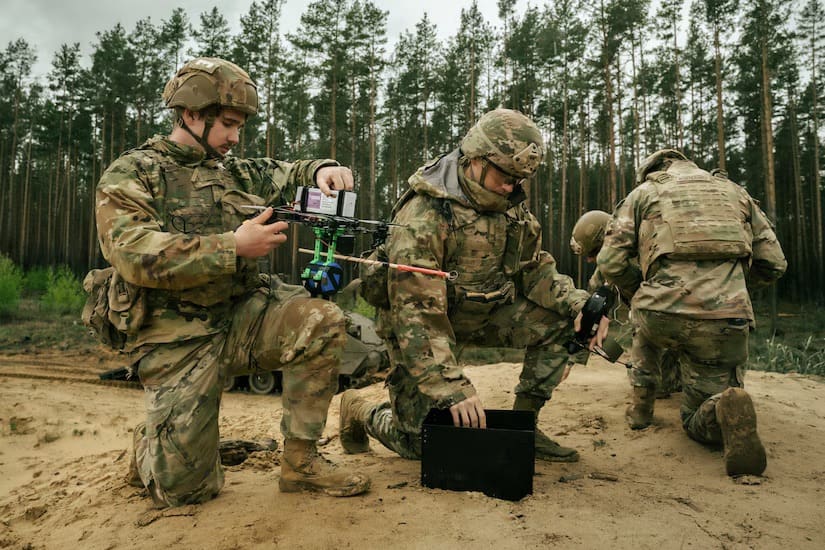
“With the right kit, paratroopers will be able to utilize a low-cost system with preexisting munitions to execute a wide variety of mission tasks — and have the power to protect their unit from an endemic threat,” he said.
The drone demonstration showed that innovation doesn’t have to come from the top.
“It feels extremely satisfying to have this level of impact, but solving these kinds of problems should not be alien to junior officers, or any leader,” La Torre said. “Every year the Army produces leaders at all levels who are better educated now than ever before. At the end of the day, rank is immaterial when it comes to problem-solving.”
For La Torre, the milestone reflects how far the 173rd Airborne Brigade has come.
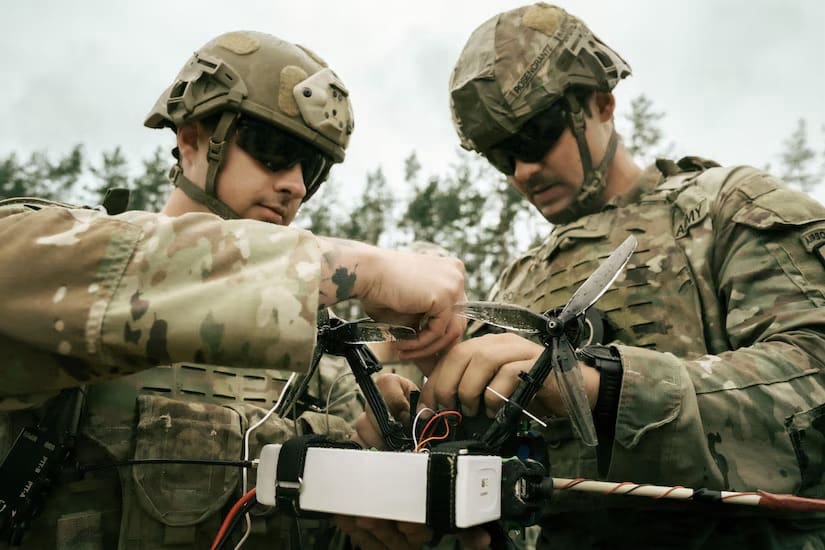
“At this time last year, this kind of training was a pipe dream for conventional units,” he said. “For the engagement itself, Chief Shea did an incredible job and so did Chief Topits. It’s such a difficult mission profile for both aircraft.”
Lessons from the bayonet innovation team fed directly into Fort Rucker’s new lethal UAS course, directed by Army Capt. Rachel Martin and Army Maj. Wolf Amacker. The course consolidates milestones within the Army’s UAS community and serves as a hub for education and experimentation.
“The more testing and experimentation we do, the less we must teach theoretically and the more we can back claims with real data,” La Torre said. “Safe and effective experimentation allows commanders to understand the true nature of the risks they assume with these systems and helps make this training more commonplace.”
For La Torre, the boundaries are clear: safety and scalability.
“We must safely conduct training, testing and experimentation,” he said. “We also must make sure everything we do is exportable to other units so they can do the same. I’m confident what we’ve done is scalable, and the lethal UAS course at Fort Rucker will centralize the growth of lethal UAS engagements while also serving as a hub for subject matter experts to gather and exchange lessons learned.”
By Army CPT Jennifer French, 173rd Airborne Brigade


